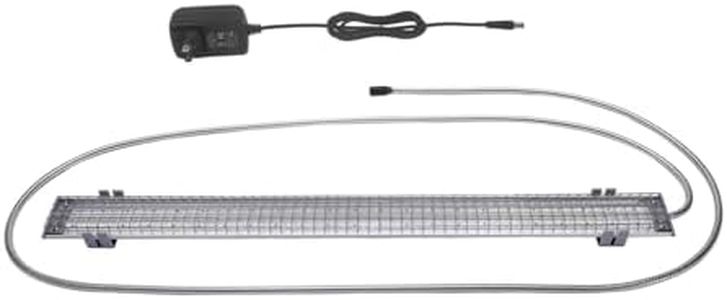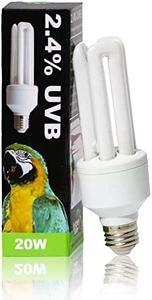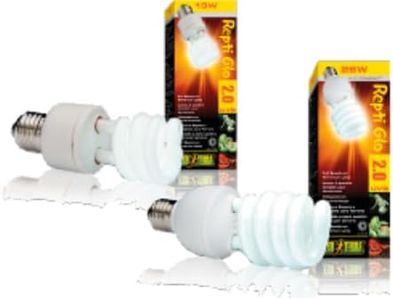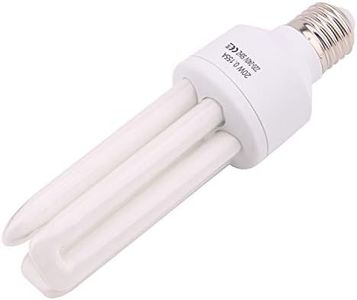We Use CookiesWe use cookies to enhance the security, performance,
functionality and for analytical and promotional activities. By continuing to browse this site you
are agreeing to our privacy policy
6 Best Full Spectrum Light For Birds
From leading brands and best sellers available on the web.Buying Guide for the Best Full Spectrum Light For Birds
When selecting a full-spectrum light for birds, it's important to aim for a product that promotes their health and simulates natural sunlight as closely as possible. Birds need proper lighting for vision, psychological well-being, and to support their physical health, especially in indoor settings where access to sunlight is limited. Understanding the key specs will help you choose a light that meets your pet bird's needs effectively, ensuring they remain happy and healthy.Color Temperature (Kelvin)Color temperature, measured in Kelvin (K), refers to the hue of light the lamp produces. This is important because different temperatures mimic different types of natural light. Around 5,000K to 6,500K best matches natural daylight, which is ideal for birds as it makes their environment feel more like the outdoors. Lower temperatures (under 4,000K) give a warm, yellowish light, while higher temperatures (over 7,000K) tend to look very blue. For most pet birds, staying in the daylight range helps maintain their mood and natural behaviors.
UV Output (UVA and UVB)Full-spectrum lights often include ultraviolet (UV) output, broken into UVA and UVB bands. UVA supports normal behavior and vision in birds, while UVB is crucial for producing vitamin D3, important for bone health. Too little UVB can cause health problems, but too much can also be harmful. Lights designed for birds typically provide a safe level; always check if the lamp specifies UVA/UVB percentages, and be aware they usually need to be replaced every several months even if the light still works, as their UV output decreases with time.
Lamp Intensity (Lumens)Lamp intensity, measured in lumens, describes how much visible light the lamp emits. This affects how bright the enclosure is for your bird. Lower lumen lights are dim and better for background use or quiet spaces, while higher lumen bulbs provide strong, clear light suitable for active areas and larger cages. For birds, natural-style daylight is best, so aim for a lamp that’s not too dim or overly glaring. Consider the size of the cage and how much external light is available to decide how much brightness you need.
Flicker-Free TechnologySome lights produce invisible flicker that humans may not notice, but birds, with their faster vision, can find very disturbing. Flicker-free or ‘high-frequency’ lights are designed to eliminate this, making them much more comfortable for your pet. Checking for flicker-free technology is especially important if your bird room is used often or your birds show unexplained stress. Prioritize this feature for the bird's peace of mind and to avoid unwanted behavioral issues.
Coverage Area and Lamp PlacementCoverage area refers to how much space the lamp effectively lights up. This depends on both the bulb design and where you place it. Ideally, the lamp should cover the main area where your bird spends time, but not overheat the cage or make parts of it too bright. Consider the distance from lamp to perch or play space—most lights work best when placed 12–18 inches above your bird. Always make sure your bird can move to shaded spots to avoid stress or overheating.






